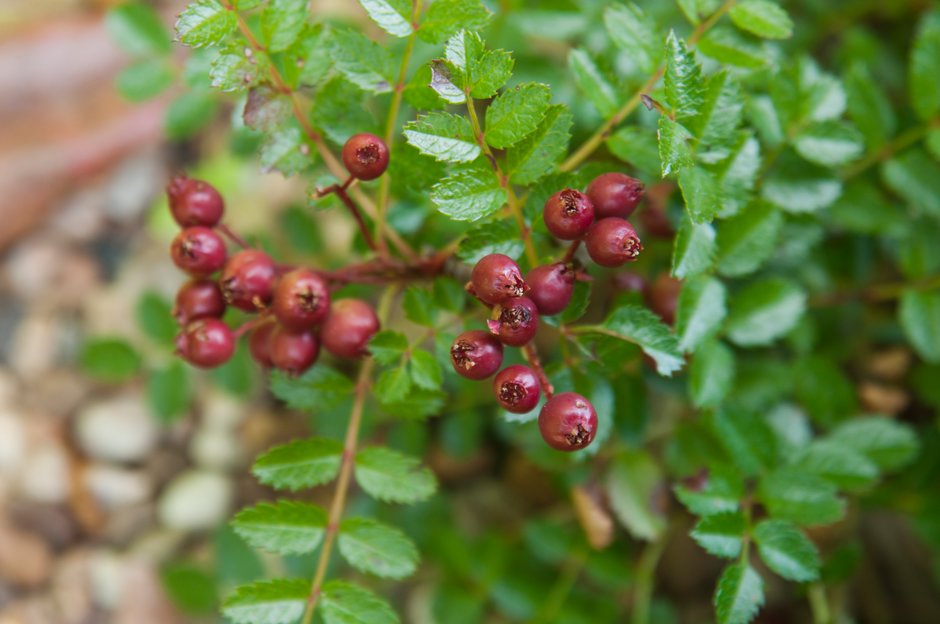Sorbus poteriifolia
A very dwarf, deciduous shrub, growing only to 30cm (12in) high and producing stems often along the ground, which naturally layer themselves. The leaves are pinnate with up to seven pairs of leaflets either side of the mid-rib, and oval to eliliptical in shape with serrated margins and a glossy green in colour. In autumn the foliage becomes crimson to orange before falling. Small pink flowers are produced in clusters in spring followed by crimson berries in summer, which mature to white with a pink flush.
Size
Ultimate height
0.1–0.5 metresTime to ultimate height
2–5 yearsUltimate spread
0.1–0.5 metresGrowing conditions
Moisture
Moist but well–drained, Well–drainedpH
Acid, Alkaline, NeutralColour & scent
| Stem | Flower | Foliage | Fruit | |
| Spring | Pink | Green | ||
|---|---|---|---|---|
| Summer | Green | Red | ||
| Autumn | Red Orange | White Pink | ||
| Winter |
Position
- Full sun
- Partial shade
Aspect
South–facing or West–facing or East–facing
Exposure
Exposed or Sheltered Hardiness
H5Botanical details
- Family
- Rosaceae
- Native to GB / Ireland
- No
- Foliage
- Deciduous
- Habit
- Bushy
- Potentially harmful
- Fruit are ornamental, not to be eaten. Wear gloves and other protective equipment when handling. Pets: Fruit are ornamental, not to be eaten - see the HTA guide to potentially harmful plants for further information and useful contact numbers
- Genus
Sorbus can be deciduous trees or shrubs with simple or pinnate leaves and clusters of small white or pink flowers, followed by white, yellow, pink, red or brown berries; some have fine autumn colour
- Name status
Correct
- Plant range
- SW China
How to grow
Cultivation
Grows well in any well-drained soil in full sun to partial shade. Prefers cooler regions in which to grow, and so prefers the climate in the north of UK and Scotland, rather than the warmer south
Propagation
Propagate by seed sown in containers in a cold frame in autumn, taking semi-ripe cuttings in early summer, budding in summer or grafting in winter
Suggested planting locations and garden types
- City and courtyard gardens
- Cottage and informal garden
- Patio and container plants
- Rock garden
- Wildlife gardens
- Flower borders and beds
Pruning
Pests
May be susceptible to aphids, scale insects, pear blister mite, red spider mite and sawfly larvae
Diseases
May be susceptible to fireblight, apple canker, silver leaf and honey fungus
Get involved
The Royal Horticultural Society is the UK’s leading gardening charity. We aim to enrich everyone’s life through plants, and make the UK a greener and more beautiful place.
